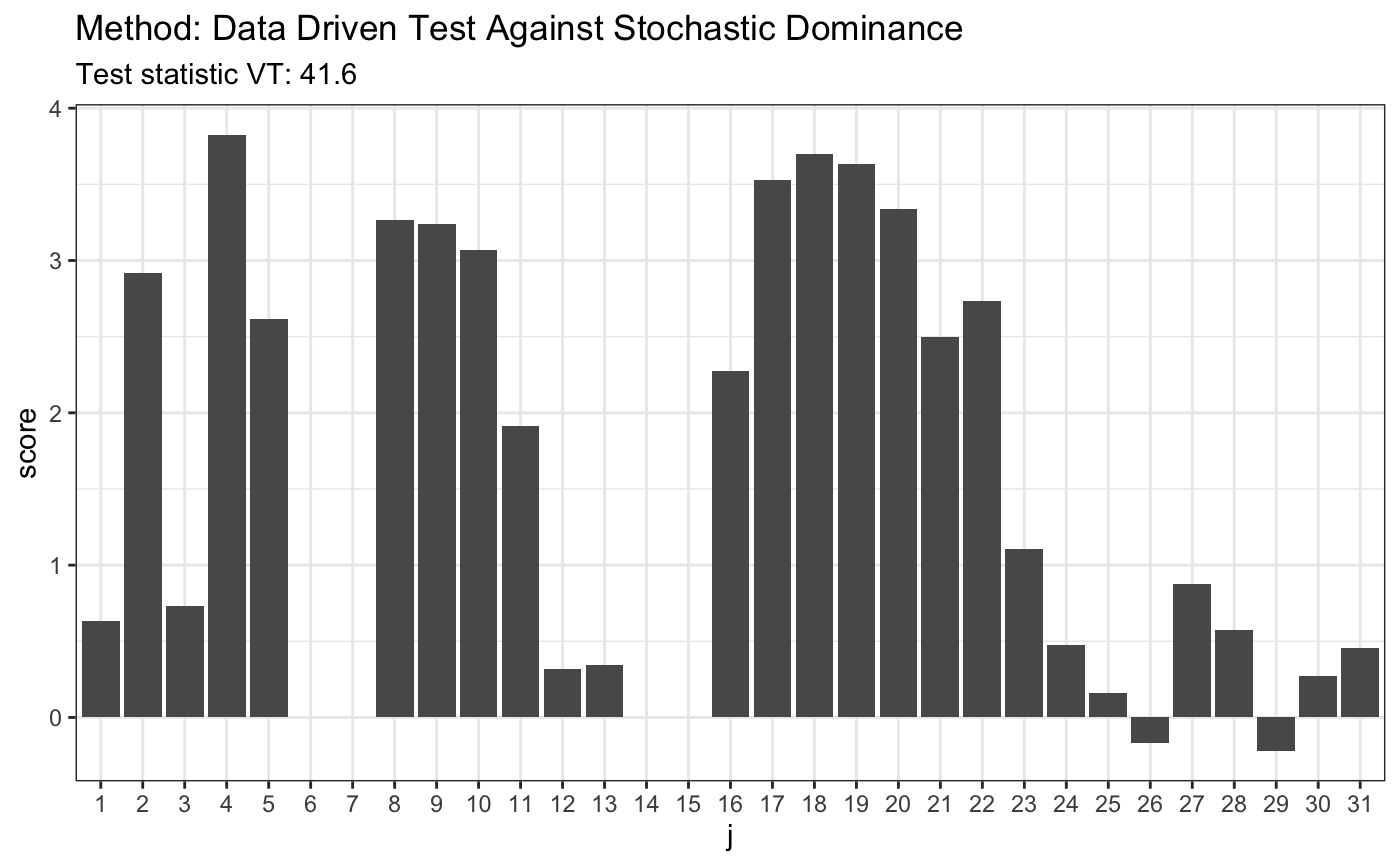Data Driven Smooth Test Against Stochastic Dominance
Source:R/ddst.againststochdom.test.R
ddst.againststochdom.test.RdPerforms data driven smooth non-parametric two-sample test against one-sided alternatives (stochastic dominance). Suppose that we have random samples from two distributions F and G. The null hypothesis is that F(x) < G(x) for some x while the alternative is that at F(x) >= G(x) for all x with strict inequality for at least one x. Detailed description of the test statistic is provided in Ledwina and Wylupek (2012).
ddst.againststochdom.test( x, y, k.N = 4, alpha = 0.05, t, nr = 1e+05, compute.cv = FALSE )
Arguments
| x | a (non-empty) numeric vector of data |
|---|---|
| y | a (non-empty) numeric vector of data |
| k.N | an integer specifying a level of complexity of the grid considered, only for advanced users |
| alpha | a significance level |
| t | an alpha-dependent tunning parameter in the penalty in the model selection rule |
| nr | an integer specifying the number of runs for a p-value and a critical value computation if any |
| compute.cv | a logical value indicating whether to compute a critical value corresponding to the significance level alpha or not |
References
Two-sample test against one-sided alternatives. Ledwina and Wylupek (2012). https://onlinelibrary.wiley.com/doi/abs/10.1111/j.1467-9469.2011.00787.x
Examples
set.seed(7) # H0 is true x <- runif(80) y <- runif(80) t <- ddst.againststochdom.test(x, y, alpha = 0.05, t = 2.2, k.N = 4) t#> #> Data Driven Test Against Stochastic Dominance #> #> data: x, alpha: 0.05, t: 2.2, k.N: 4 #> VT = 0.9, T = 1 #>plot(t)# H0 is false # known fixed alternative x <- runif(80) y <- rbeta(80,4,2) t <- ddst.againststochdom.test(x, y, alpha = 0.05, t = 2.2, k.N = 4) t#> #> Data Driven Test Against Stochastic Dominance #> #> data: x, alpha: 0.05, t: 2.2, k.N: 4 #> VT = 41.6, T = 5 #>plot(t)

